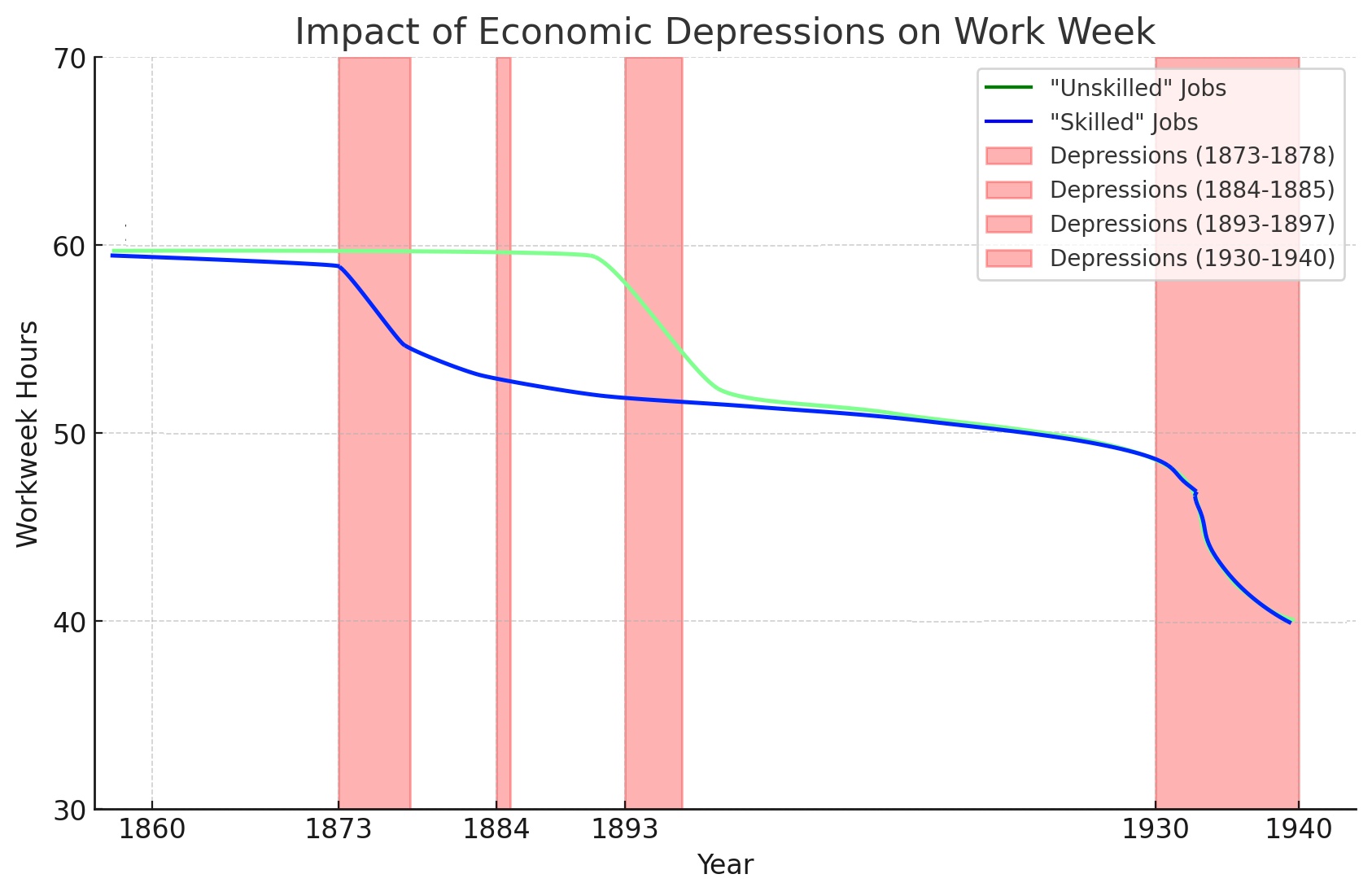The more you know about the Second Industrial Revolution, the more you know about today's Information Revolution.
A visual history of the United States work week from 1860 to 1940. This graph is an aggregate of information I collected over the past thirty years. After the Civil War, the average workweek was about 60 hours and the Industrial Revolution began, bringing automation and electricity into farming, manufacturing, transportation and communication.

During the first post-Civil war depression (1873-1878), jobs bifurcated into two categories - "new technology" skilled jobs and existing "unskilled" jobs. The new jobs were lucrative enough that employers tended towards a 48-hour workweek for about twenty years, then the 60-hour jobs fell to 48 hours during the 1890s.
During the Great Depression, 25% unemployment was eventually solved by government legislation - a mandatory 40 hour workweek and child labor laws.
This phenomenon can be modeled with two linear equations, which I described here about ten years ago:

But that post is somewhat cluttered and confusing so I created this visual graph and a simpler textual description.
Abstractly, our finite time can be spent producing or consuming.
In an ideal economy, production equals consumption.
16 hours per day = 8 hours producing + 8 hours consuming.
As the rate of productivity rises, more consumption time is needed to maintain equilibrium.
16 hours per day = 7 hours producing + 9 hours consuming.
Keynesian theory is right. The real cause of economic depressions is the mismatch between production time and consumption time which occurs gradually as productivity rises. Governments then create make-work jobs in a haphazard attempt to maintain consumption (equilibrium). Eventually, the impedance mismatch leads to collapse and a new system. We are probably on the verge of that change.
Conditions
Assume we want Production = Consumption. (P = C)
Linear Equations
- P Hours + C Hours = Konstant (16 hours if we measure by day).
- (P Hours) X (Rate of P) = (C Hours) X (Rate of C)
Example by week: (40 hours) x (Rp) = (72 hours) x (Rc)
As Rp increases, P Hours must decline to maintain equilibrium.
In a productive economy, the net amount of work shrinks over time.


Comments